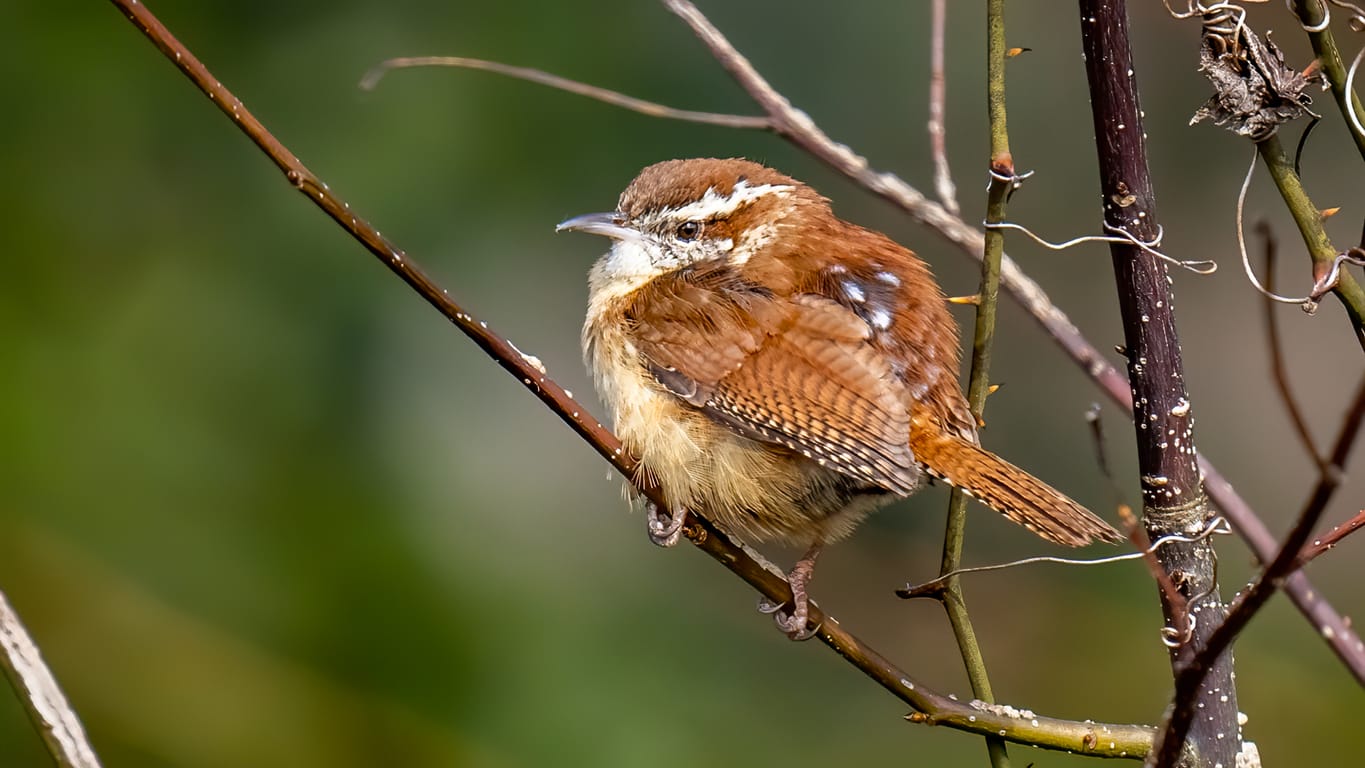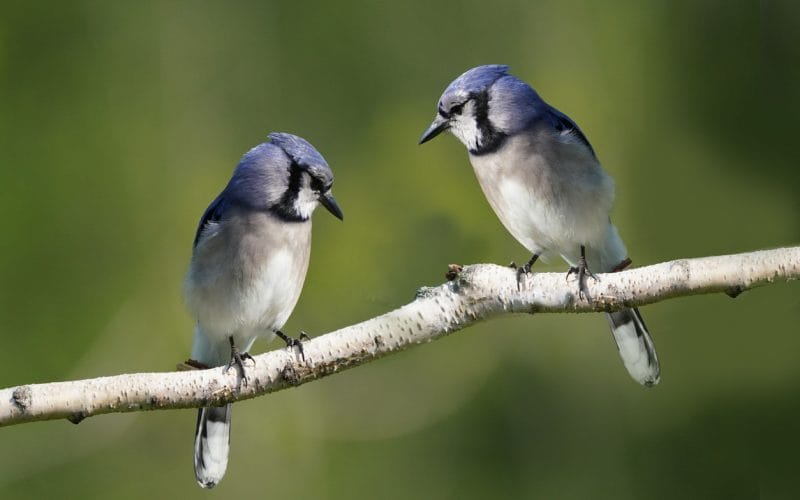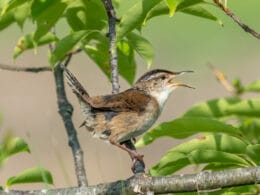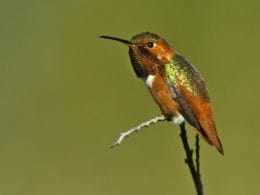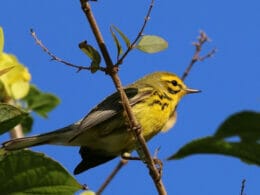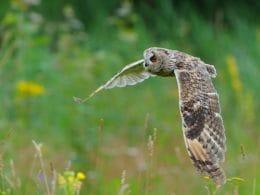According to the North Carolina Bird Records Committee (NCBRC), there are currently over 470 species of birds in the Tar Heel State, making it one of the richest states in the south when it comes to the variety of birds.
While it may take you some extensive exploration in order to enjoy watching these birds in the state, you’ll be able to enjoy some of them from the comfort of your backyard.
In this article, we’ll walk you through some of the most recognizable backyard birds of North Carolina. So without further ado, let’s jump right in!
1. Northern Cardinal
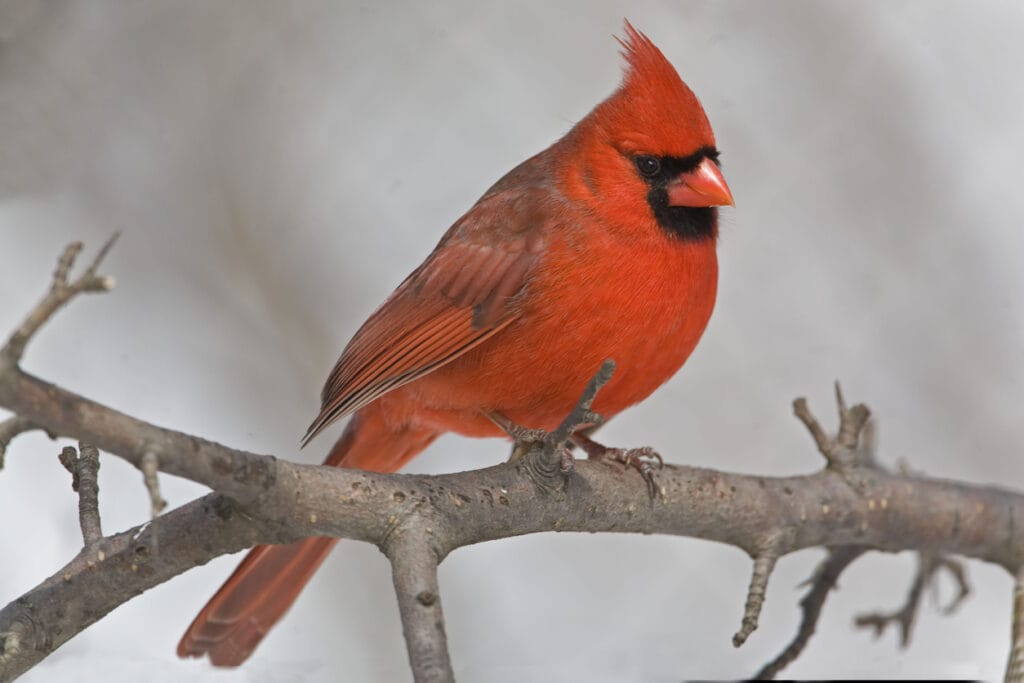
Kicking off the list with one of the most common birds that you’ll come across while hanging around the backyard. The Northern Cardinal is one of the most easily recognizable and beautiful birds out there.
The bird’s territorial male has a unique crimson red color that covers the majority of its body and head along with a red crest over its head with a black mask on its face that goes all the way to the bird’s throat.
Females, on the other hand, have a slightly yellowish buff color while maintaining the characteristic reddish crest and dark face mask.
2. Carolina Wren

As the name suggests, Carolina Wrens are native to the state. The little stocky birds are known for their dark brown top coat and light brown bottom coat.
The upright tail and white eyebrow stripe are also characteristic features of the bird, along with its shy and elusive behavior.
The wren typically prefers thick-wooded areas but will land in your backyard if your feeder is filled with suet, peanut hearts, or sunflower seeds.
3. Carolina Chickadee
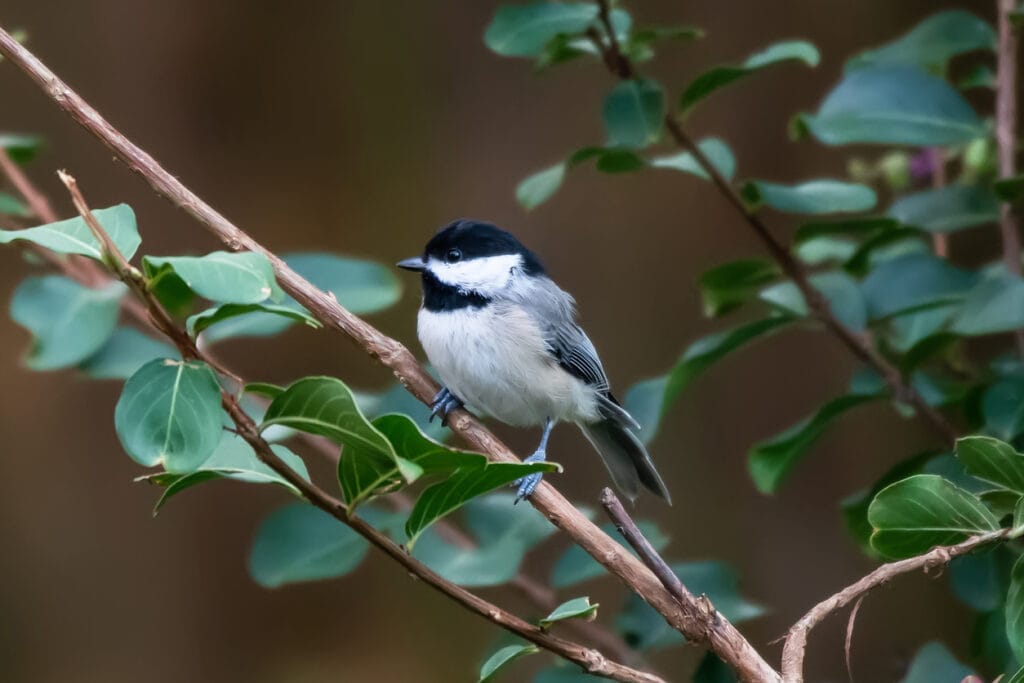
Similar to the wren, this bird is also native to the region. The bird has a color pattern similar to Black-capped Chickadees, including the black cap and neck patch along with white bellies and cheeks.
The main difference between the two is that the Carolina variety sounds a little softer with a slimmer. It’s also significantly more common in the state than the black-capped variety.
Author Note: You can easily attract the bird to your backyard if you offer a meal of suet, peanuts, nyjer seeds, or sunflower seeds in your bird feeder.
4. Red-winged Blackbird
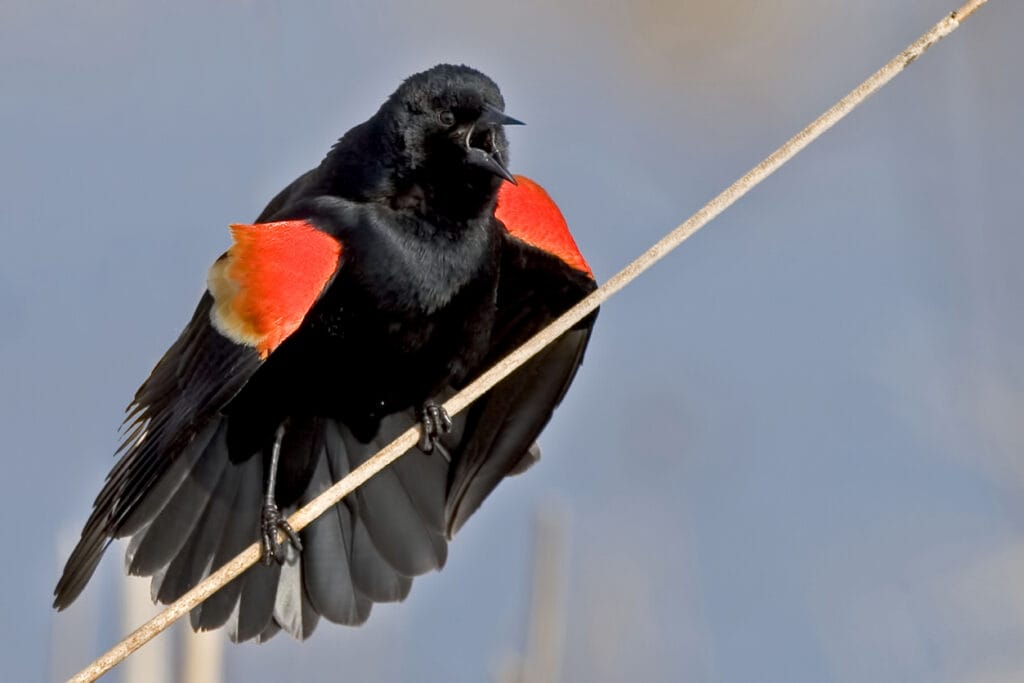
The Red-winged Blackbird isn’t only abundant in North Carolina, but it’s also one of the most common backyard birds across the nation!
The amazing bird rocks a shiny all black look that is common across different species of blackbirds.
Yet, it can be easily identified thanks to the unique red and yellow plumage that covers the top of its shoulders. Females are mostly brown with streaks of white covering the majority of their bellies.
5. Red-bellied Woodpecker

Although there are several woodpeckers in North Carolina, not many species are as unique as the Red-bellied Woodpecker.
This bird is known for being extremely well adjusted to residential areas, so not only will they hang around your backyard, but they can also build their nest in bird boxes nearby.
Despite the name, the most impressive feature of the red-bellied woodpecker is the flaming red patch on the back of its head along with the checkered pattern all over its back and wings. The bird also has a red patch on the bottom of its belly.
The bird mainly feeds on insects and small fish. But they can also land on your tray feeder for some crushed nut bits.
6. Tufted Titmouse

The Tufted Titmouse looks quite similar to the northern cardinal in terms of body structure and the crest above the head. However, the bird is mostly steely gray with large eyes.
The bird gets along with several other birds, such as nuthatches, woodpeckers, and chickadees. However, they can get a little competitive over territory with other birds of the same species, especially around bird feeders.
The bird is greatly attracted to suet, peanuts, as well as seeds, and they’ll land on different types of feeders, such as platform and tube feeders.
7. Mourning Dove
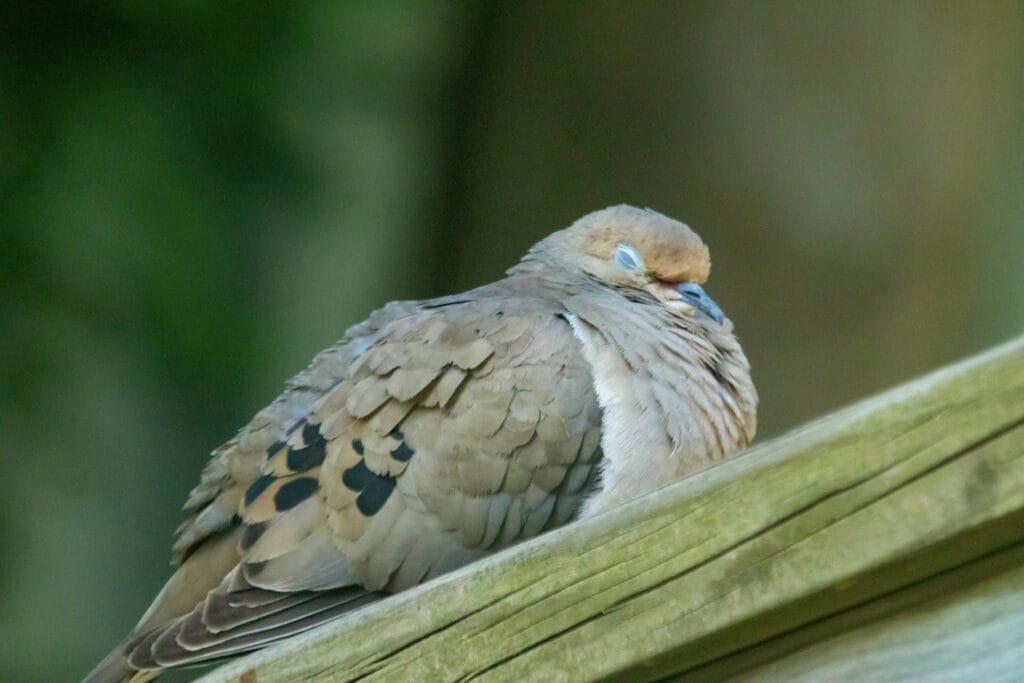
The Mourning Dove is one of the most common doves that will hang around your backyard in North Carolina.
The tubby bird is characterized by its relatively small size and buff colors that cover the majority of its body and make it identifiable from rock doves.
Author Note: The bird also has a unique sky blue ring around its eyes along with black freckling across its wings.
The bird prefers millets and food remains over seeds, and you need to spread them on the ground because the bird typically feeds on ground level.
8. House Finch
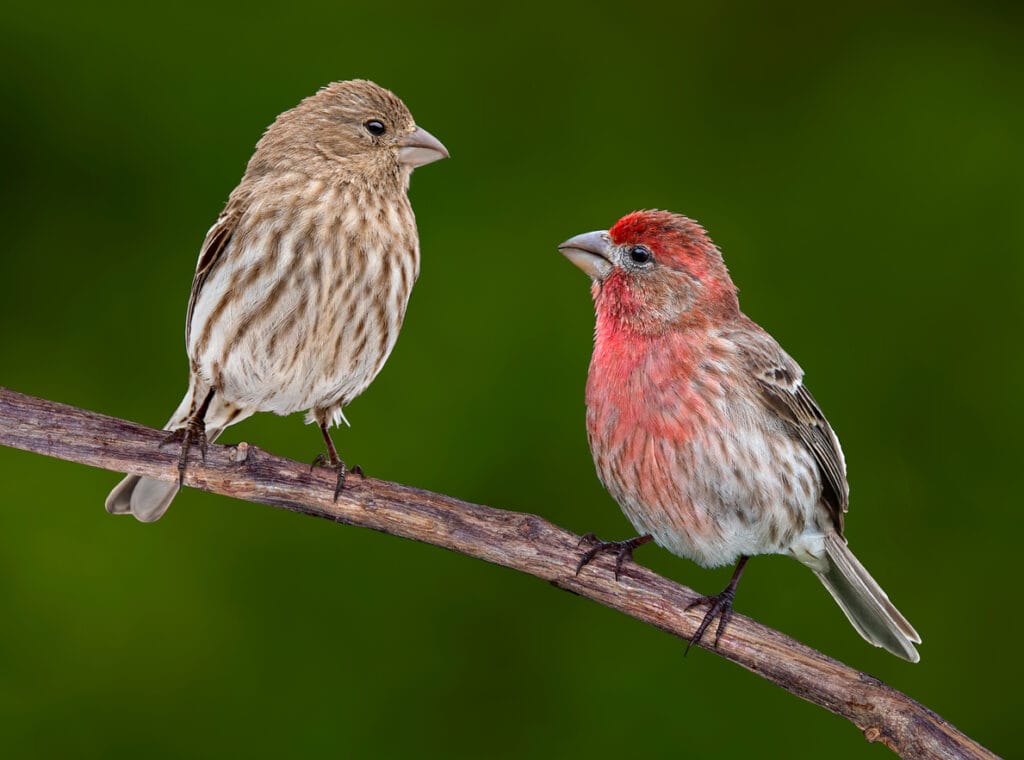
The House Finch is one of the extremely common birds that have a lovely singing tone in the morning.
Unlike House Sparrows that can be a bit of a nuisance, these birds are usually harmless and won’t defend their nests aggressively.
The bird usually has a standard house bird appearance with brown plumage. However, males of the species may have some reddish tints on their chests and belly depending on their diet.
9. American Goldfinch

If you have a thistle feeder, you’ll attract many American Goldfinches, which are one of the most common house birds in the United States, and not just North Carolina.
These fairly abundant birds are found throughout the year in the state. However, you’ll be able to recognize them more in summer and spring because they put on a unique coat of bright gold-yellow feathers along with contrasting black caps and wings.
The birds will molt in winter and maintain a rather dull coat of brown and dark olive, so you’ll be able to recognize them only by their black finch peaks and a high appetite for suet and seeds in your bird feeder.
10. Blue Jay

Blue Jays are among the most common and distinct songbirds that you’ll find around your backyard in North Carolina due to their strikingly bright blue color.
The bird has an impressive blue upright crest with white undersides along with a blue and black pattern on the back. The bird is quite loud and chatty, which makes it a nuisance for some house owners.
However, they’re surprisingly smart and beautiful, as they can mimic the sound of a hawk to keep other birds away. They’re usually attracted to bird baths and feeders with suet and sunflower seeds.
11. Downy Woodpecker

Downy Woodpeckers are quite common around backyards due to their affinity for bird feeders. The bird shares a lot of characteristics with hairy woodpeckers, such as the white bellies, the black wings with spots, and the red spot on the back of males’ heads.
Not only that, but the two birds also share the same food preferences, including suet and black sunflower seeds. The easiest way to distinguish between the two is by size.
Downy Woodpeckers aren’t only smaller than hairy woodpeckers, but they’re also the smallest species of woodpeckers in all of North America.
12. Eastern Bluebird
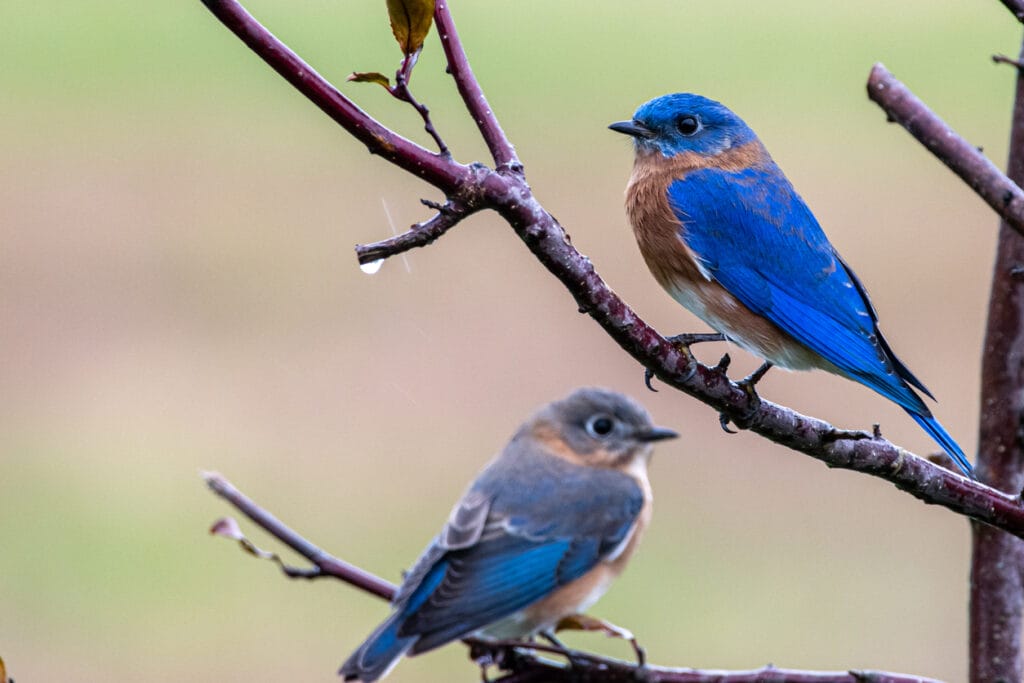
The Eastern Bluebird is one of the most beautiful thrushes, rocking a beautiful and unique deep blue feather coat that primarily covers the bird’s back. The bird is known for its relatively large eyes, bellies, and heads.
Beneath the blue backs, the bird is also characterized by the reddish bronze belly. These colors are also shared by female eastern bluebirds, although they’re far less vibrant than in males.
The bird likes to perch on fence posts and low hanging branches while scouting the area for insects, their favorite meal.
However, you can attract them to your backyard by building small bird boxes that overlook a decently large space for insects hunting. Besides insects, they’re usually attracted to mealworms, so you can use them to attract the bird.
13. American Robin

American Robins are very common around backyards, and they might land in your backyard while foraging and looking for invertebrates like mealworms to consume.
The bird is easily identified thanks to its bright orange-red bellies and yellow peaks along with black backs.
The birds find it difficult to crack the hard shell of seeds open, which is why they’re more attracted to flat feeders with crushed peanuts, mealworms, and berries.
Additionally, they like to bathe and clean their feathers from dirt, so having a bird fountain is a huge incentive for the birds to land in your yard!
14. Yellow-rumped Warbler
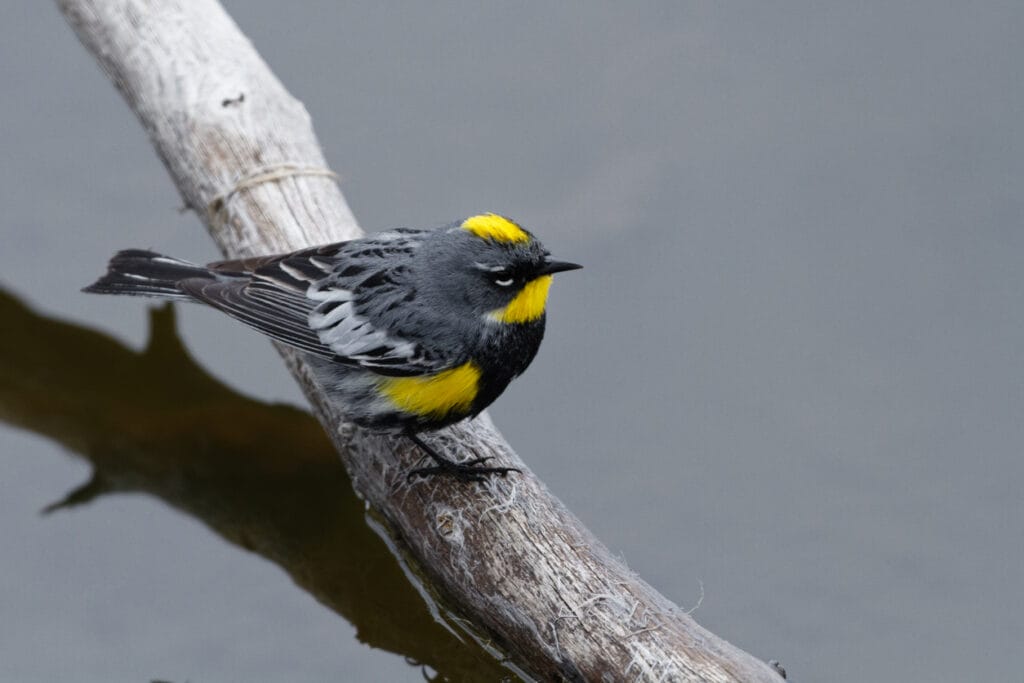
The Yellow-rumped Warbler is one of the most common new world warblers in the state of North Carolina.
The bird is characterized by its impressive canary yellow coloration all over its body, including the face, sides, and of course, the rump, with the rest of its body covered in brownish feathers.
This beautiful coloration is only available throughout the late spring and summer months because the Yellow-rumped Warbler migrates from Canada after breeding.
Author Note: Like most warblers, these birds are ground feeders, so you can try to attract them using a tray feeder with berries, raisins, suet, and black sunflower seeds.
15. Ruby-throated Hummingbird

Unfortunately, the state of North Carolina isn’t the ideal spot to enjoy a huge variety of hummingbirds, as you’re less likely to stumble across any species of hummingbirds except for the Ruby-throated Hummingbird.
The good news is, these birds are extremely beautiful. This bird has an iridescent and vibrant red-red plumage on its throats along with vibrant green backs and pale green on the side and bellies.
The hummingbird is usually attracted to the nectar in flowers, so you can attract them using nectar feeders simply by creating a concentrated syrup of sugar and water.
16. Indigo Bunting
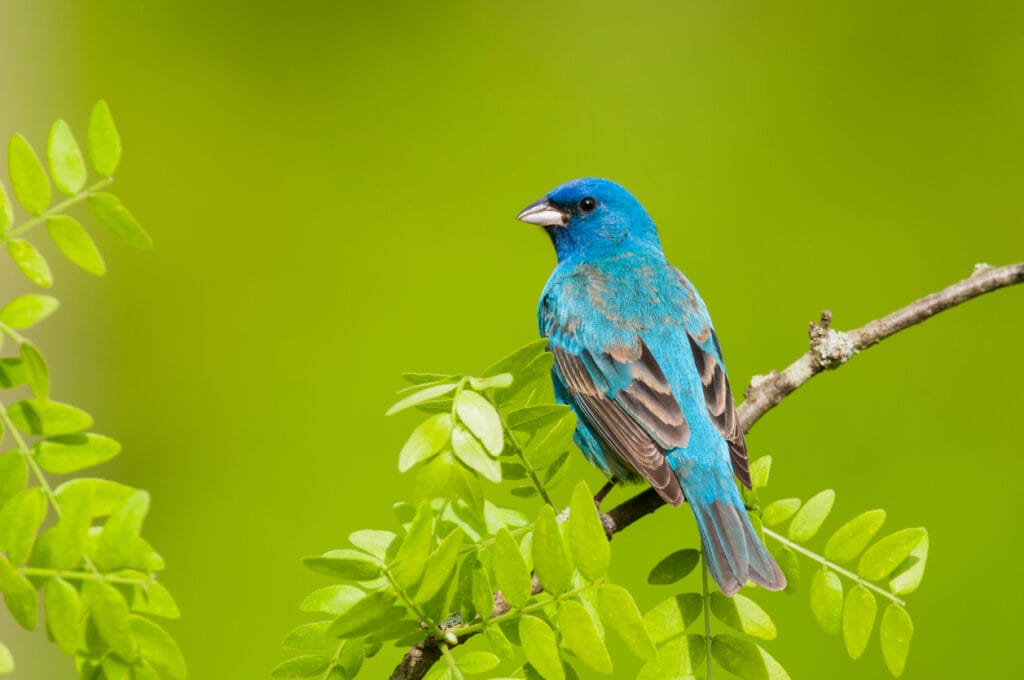
The Indigo Bunting is one of the most beautiful birds that you find around your backyard. However, the bird prefers shrubby fields over backyards, so you might need to use thistle and nyjer seeds in order to lure them into your yard.
The males of the species are characterized by an ultra vibrant blue color that covers the vast majority of their bodies, along with a few black streaks at the tail and wing. On the other hand, females are mostly brown in color.
The bird is usually found in North Carolina during summer, migrating from breeding grounds in South and Central America, especially the Caribbean region.
17. White-throated Sparrow

The White throated Sparrow has a large, round, and gray belly along with a brown back with streaks of black.
Author Note: Besides the white throat, the most characteristic feature of the bird is the black and white stripes on the head along with the yellow line between the eyes extending all the way to the bird’s bill.
The bird mostly breeds in Canada and then heads south during the winter months, so you’ll typically expect the birds around the late months of the year.
White-throated Sparrows often live in relatively large flocks and can land in backyard if your platform bird feeder contains black sunflower seeds or millet.
18. Northern Mockingbird
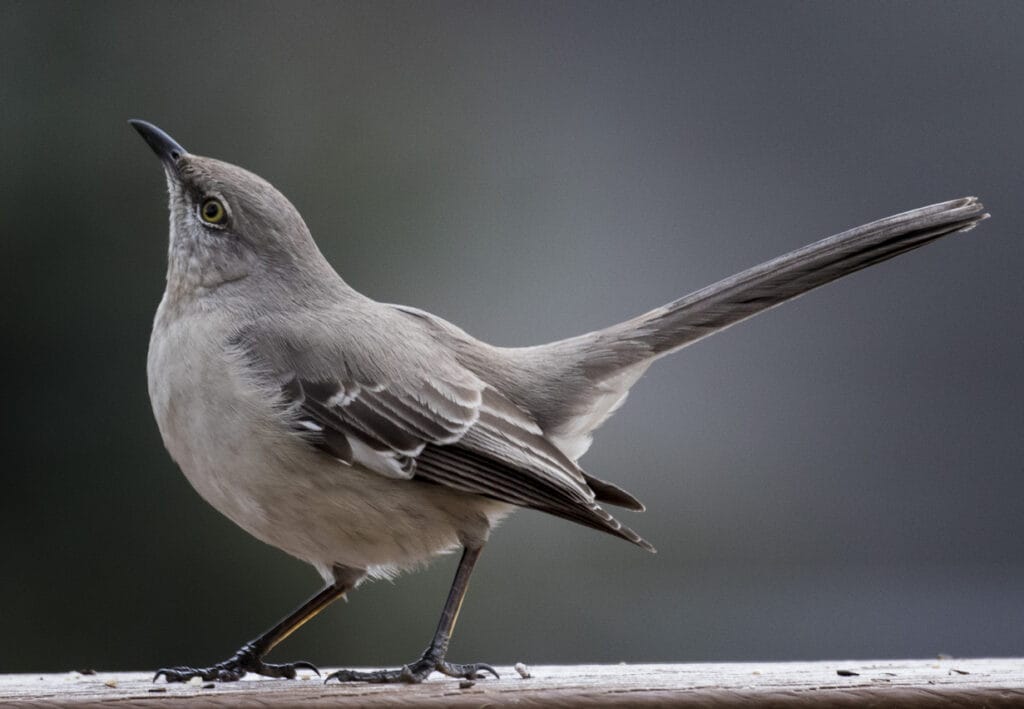
Northern Mockingbirds are relatively medium sized songbirds. The bird is known for its long tail, small head, and pale gray color across its body that gets darker towards the back and wings.
The bird is usually found in pairs and viciously defends their territory. The smart male can learn and copy other birds’ songs, hence the name.
The birds can be found throughout the year, although they may sometimes migrate up north looking for more favorable conditions.
Northern Mockingbirds rarely visit bird feeders, but they’re usually attracted to fruity bushes, so they might land in your backyard if you plant those.
19. White-breasted Nuthatch
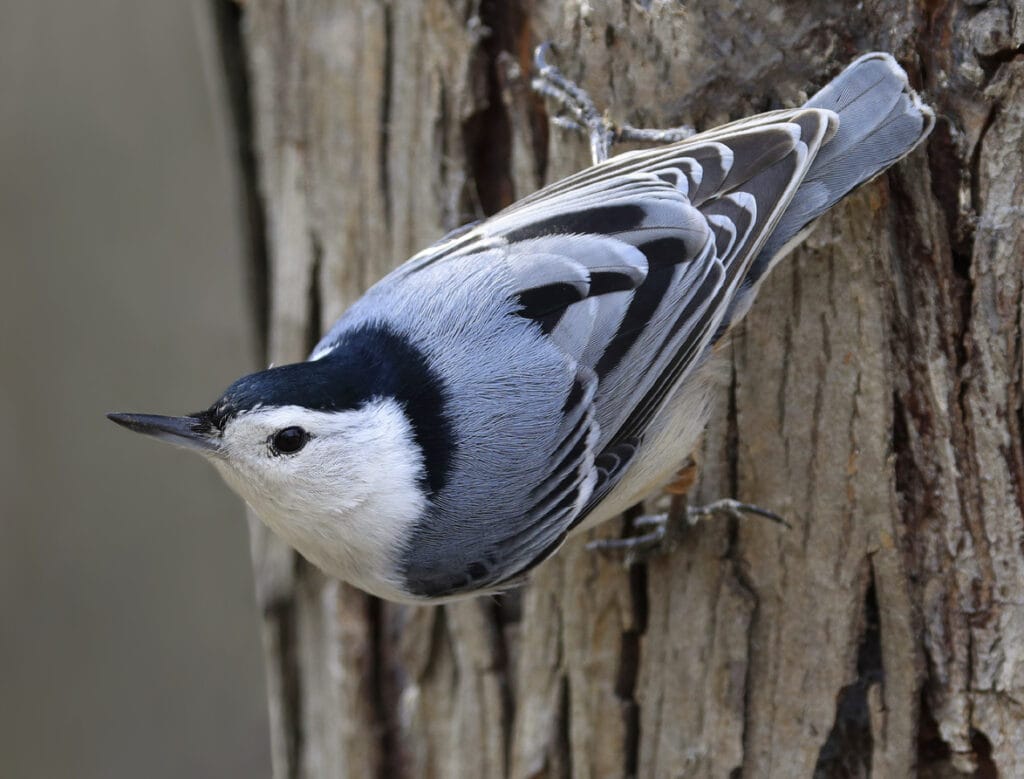
This bird is characterized by its long pointed bill, short tail, and bluish-gray plumage on the back along with white breasts and belly.
You can find the bird in state parks as well as backyards. The bird likes to perch on fence posts and low hanging branches while scouting the area for insects, their favorite meal.
Final Words
This wraps it up for today’s guide about the most popular and beautiful backyard birds to enjoy in North Carolina.
If you want to attract more of these amazing birds to your backyard, you can use a variety of bird feeders as well as bathing fountains to make your garden a safe haven for these colorful creatures!
FAQ
The most common bird in North Carolina is likely the American Robin.
The rarest bird in North Carolina is likely the Red-cockaded Woodpecker and the Northern Saw-whet Owl.
North Carolina is home to a variety of bird species, including waterbirds such as ducks, geese, and shorebirds, songbirds like warblers and thrushes, and raptors like hawks and eagles.
The official bird of North Carolina is the Northern Cardinal.




